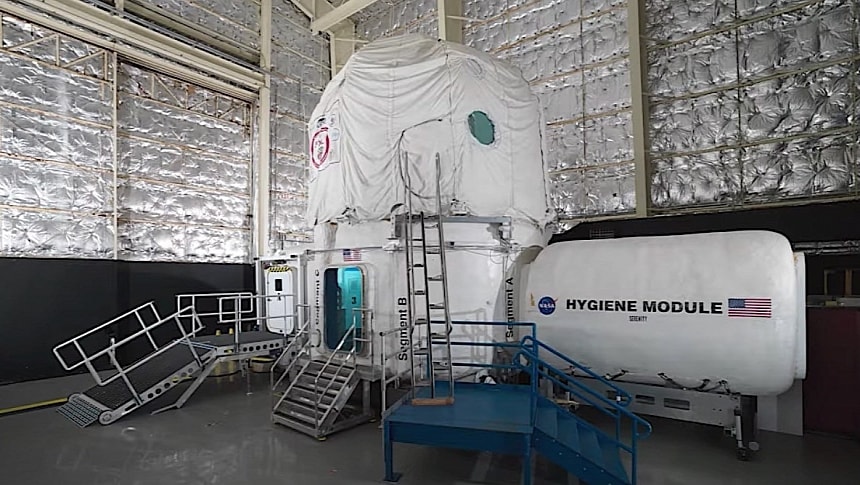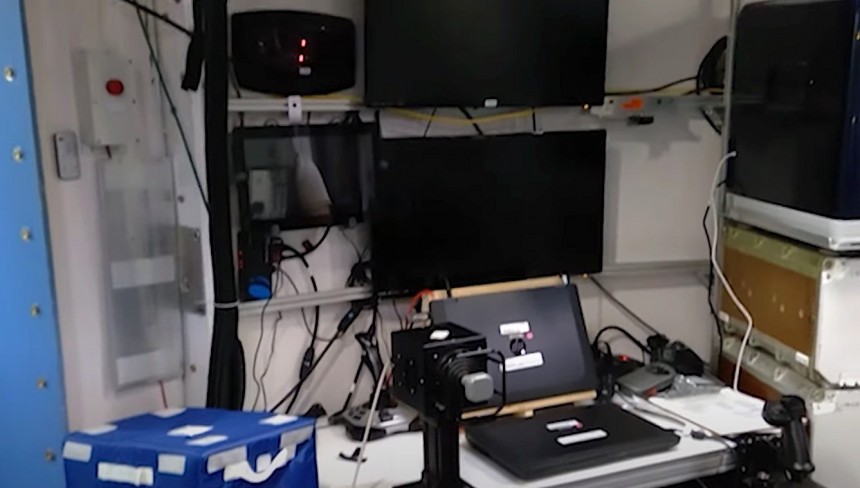If everything falls into place just right, we just might get to witness our species' first crewed mission to Mars during our lifetime. NASA is actively planning for this, and even if the actual spacecraft and other gear needed for the task are not yet in the works, efforts to better understand what such a mission would entail are being made on a scale never before seen.
These efforts include isolating a bunch of volunteers inside a simulated Mars habitat located here on Earth. That's not something our kind hasn't done before, but the American space agency just announced an extension of its initial research into this field.
Over at NASA's Johnson Space Center in Houston, Texas, there is a facility called Human Exploration Research Analog. That's HERA, for short, and it's a place unlike any other on this planet.
Physically speaking, the facility is no larger than your average European apartment. It measures 650 square feet (60 square meters), with the amount of space available divided into two floors, a loft, and a hygiene module.
The habitat is a closed environment, completely isolated from its surroundings, and it is used to serve as a tool for "isolation, confinement, and remote conditions in exploration scenarios." A perfect replication, then, for the conditions the Martian explorers of the early missions will have to endure while en route to the planet or down on the surface.
NASA first opened the HERA for testing purposes years ago, but seems to have accelerated the pace at which it uses the facility in recent years.
In the four months that have passed since the beginning of this year, for instance, a volunteer crew has already gone through HERA's trials and tribulations. Having entered the habitat on January 26, four people left the place on March 18.
There were several tasks the crew needed to perform, including science and maintenance, all while trying to overcome the challenges of a deep space mission to Mars, down to the communications delay true astronauts will likely experience. Most importantly, no less than 18 human health studies were conducted during their stay in HERA.
NASA plans no less than four missions inside the habitat this year, and the crew of the second mission was just announced. There will be, once more, four volunteers, going inside HERA for a period of 45 days of isolation (or 45 days of living the life of an astronaut, if you look at all of this just right).
The crew comprises Jason Lee, an associate professor-in-residence at the University of Connecticut's School of Mechanical, Aerospace, and Manufacturing Engineering; Stephanie Navarro, a space operations officer in the U.S. Air Force Reserve; commercial pilot Shareef Al Romaithi; and Piyumi Wijesekara, a research scientist at NASA's Ames Research Center. Two more people, Jose Baca and Brandon Kent, are the backups for the mission.
Al Romaithi is a United Arab Emirates (UAE) national, and his presence on the crew marks the first time ever in the HERA program that a person from that country has taken part in such a mission.
Just like the crews before them, the new one will have to conduct scientific research and operational tasks. Communication delays of up to five minutes each way are also included in the menu, so researchers can get a taste of what such a delay would mean for an actual mission.
Most importantly, though, this crew will also walk out on the surface of Mars. Kind of, because they will not actually leave the habitat, and they certainly are not on the alien planet, but they will use virtual reality to perform something that'll probably soon be widely named a Marswalk.
All four people will be subjected to the same set of 18 health studies. They include anything from physiological to behavioral and psychological responses to such a challenging environment, because understanding how human beings will respond to extended travel times through space and then some more isolation on the surface is crucial for mission planners.
Despite having conducted several such mock missions in recent years, NASA has yet to make any of its findings public. That's probably because a lot more research on a more diverse pool of humans is needed to "develop and test strategies aimed at helping astronauts overcome obstacles on long missions deep into space."
2024's second HERA mission is set to conclude on June 24, and it will be followed by two more. The last one of this year's “going to Mars" roleplay game is expected to conclude on December 20.
It's important to note NASA is publicly allowing people to sign up for simulated HERA missions to Mars. There are, of course, some conditions to be met, but they are only revealed when you go through the process (the most important being you need to be an American citizen). So the only way you can know if you're astronaut material is to hit this link and take it from there.
Over at NASA's Johnson Space Center in Houston, Texas, there is a facility called Human Exploration Research Analog. That's HERA, for short, and it's a place unlike any other on this planet.
Physically speaking, the facility is no larger than your average European apartment. It measures 650 square feet (60 square meters), with the amount of space available divided into two floors, a loft, and a hygiene module.
The habitat is a closed environment, completely isolated from its surroundings, and it is used to serve as a tool for "isolation, confinement, and remote conditions in exploration scenarios." A perfect replication, then, for the conditions the Martian explorers of the early missions will have to endure while en route to the planet or down on the surface.
NASA first opened the HERA for testing purposes years ago, but seems to have accelerated the pace at which it uses the facility in recent years.
There were several tasks the crew needed to perform, including science and maintenance, all while trying to overcome the challenges of a deep space mission to Mars, down to the communications delay true astronauts will likely experience. Most importantly, no less than 18 human health studies were conducted during their stay in HERA.
NASA plans no less than four missions inside the habitat this year, and the crew of the second mission was just announced. There will be, once more, four volunteers, going inside HERA for a period of 45 days of isolation (or 45 days of living the life of an astronaut, if you look at all of this just right).
The crew comprises Jason Lee, an associate professor-in-residence at the University of Connecticut's School of Mechanical, Aerospace, and Manufacturing Engineering; Stephanie Navarro, a space operations officer in the U.S. Air Force Reserve; commercial pilot Shareef Al Romaithi; and Piyumi Wijesekara, a research scientist at NASA's Ames Research Center. Two more people, Jose Baca and Brandon Kent, are the backups for the mission.
Al Romaithi is a United Arab Emirates (UAE) national, and his presence on the crew marks the first time ever in the HERA program that a person from that country has taken part in such a mission.
Just like the crews before them, the new one will have to conduct scientific research and operational tasks. Communication delays of up to five minutes each way are also included in the menu, so researchers can get a taste of what such a delay would mean for an actual mission.
All four people will be subjected to the same set of 18 health studies. They include anything from physiological to behavioral and psychological responses to such a challenging environment, because understanding how human beings will respond to extended travel times through space and then some more isolation on the surface is crucial for mission planners.
Despite having conducted several such mock missions in recent years, NASA has yet to make any of its findings public. That's probably because a lot more research on a more diverse pool of humans is needed to "develop and test strategies aimed at helping astronauts overcome obstacles on long missions deep into space."
2024's second HERA mission is set to conclude on June 24, and it will be followed by two more. The last one of this year's “going to Mars" roleplay game is expected to conclude on December 20.
It's important to note NASA is publicly allowing people to sign up for simulated HERA missions to Mars. There are, of course, some conditions to be met, but they are only revealed when you go through the process (the most important being you need to be an American citizen). So the only way you can know if you're astronaut material is to hit this link and take it from there.









